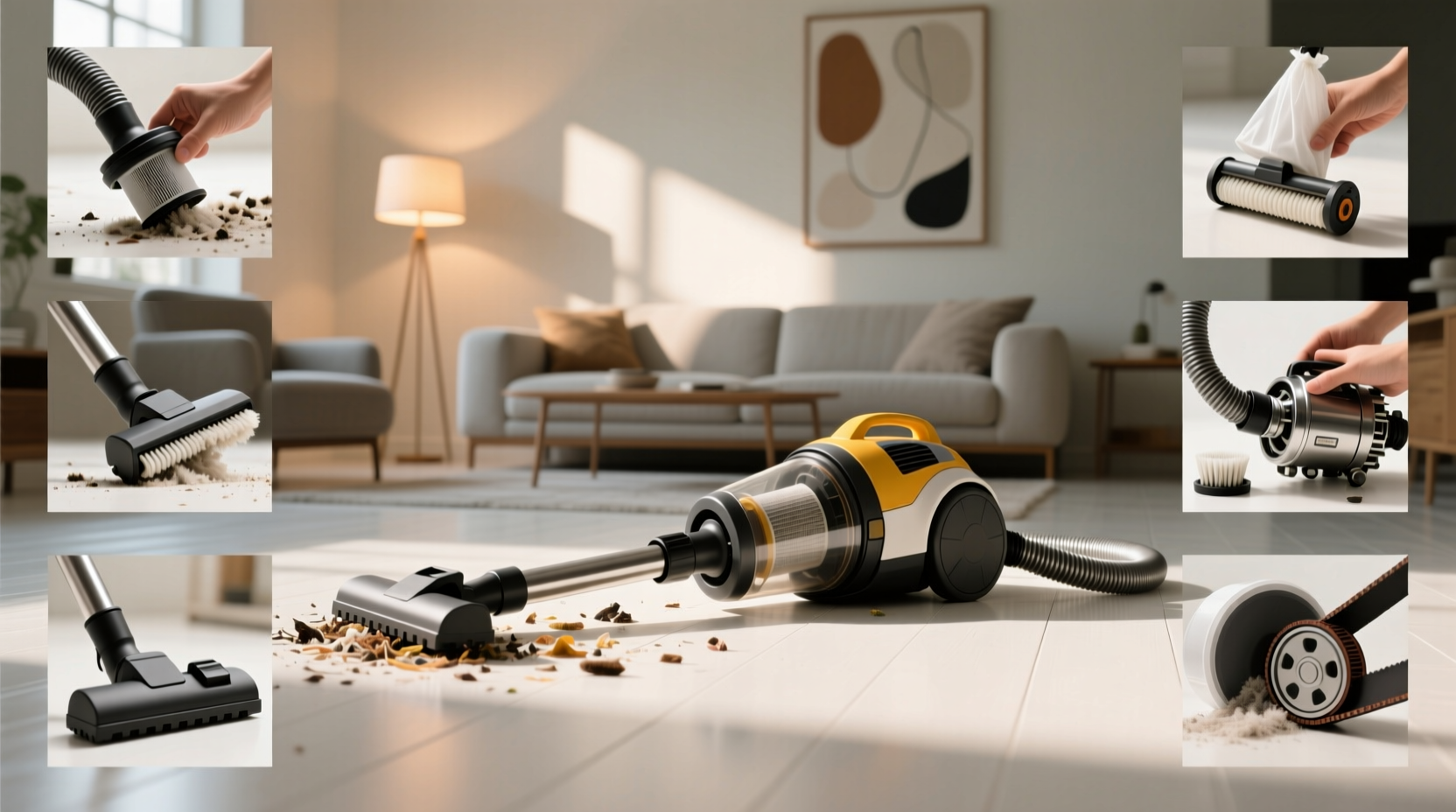A vacuum with no suction can leave your floors dusty and frustrating to clean.
This guide shows simple steps to fix the problem, from clogged filters to hidden blockages.
Learn how to get your vacuum cleaner working again and keep your home fresh and clean.
How to Fix a Vacuum Cleaner with No Suction
1. Empty the Dustbin or Bag
A full dustbin or bag restricts airflow, making your vacuum lose suction.
Check if the container is overflowing and empty it immediately.
For bagged models, replace the bag once it’s two-thirds full.
Regularly cleaning out the bin prevents blockages and ensures smooth airflow, keeping suction at maximum strength.
2. Clean or Replace the Filters
Clogged filters are a leading cause of weak suction.
Most vacuums have a pre-motor filter and sometimes a HEPA filter.
Wash reusable ones with water and let them dry completely before reinstalling.
If they’re worn out or damaged, replace them. Clean filters ensure air passes through freely, boosting suction power.
3. Check for Blockages in the Hose
Debris like hair, dust, or small objects can get stuck in the hose.
Disconnect it and run a long, flexible object through to clear out clogs.
You can also shine a flashlight inside to spot hidden blockages.
Keeping the hose clear restores airflow and helps your vacuum perform at its best.
4. Inspect the Brush Roll
A tangled brush roll makes it hard for the vacuum to pull in dirt.
Flip your vacuum over and check for hair, string, or fibers wrapped around it.
Carefully cut away tangles with scissors.
Clean brushes help agitate dirt and guide it into the vacuum, improving suction immediately.
5. Examine the Belt
If the belt driving the brush roll is loose, stretched, or broken, suction may feel weak.
Remove the bottom plate and check its condition. Replace it if it looks worn.
A properly fitted belt keeps the brush roll spinning efficiently, allowing the vacuum to pick up dirt with ease.
6. Look for Leaks in the Hose or Seals
Cracks in the hose or gaps in seals reduce suction dramatically.
Run your hand along the hose while the vacuum is on to feel for escaping air.
Replace damaged hoses or tighten seals to restore pressure.
Even small leaks can affect airflow and prevent proper suction performance.
7. Adjust the Height Settings
If your vacuum is set too high for the floor type, it won’t form a proper seal.
Adjust the height dial so the brush roll makes light contact with the surface.
Too low can damage carpets, while too high reduces suction.
The right setting ensures optimal dirt pickup on any surface.
8. Check for Motor Issues
If the suction remains weak after cleaning, the motor might be struggling.
Listen for unusual sounds or overheating.
A failing motor may require professional repair or replacement.
Maintaining clean filters and avoiding overfilled bins can extend motor life and prevent suction loss in the long run.
9. Maintain Regular Cleaning Routines
Prevention is better than repair.
Clean the dustbin after each use, wash filters monthly, and inspect hoses often.
Routine care keeps your vacuum running efficiently and prevents sudden suction loss.
A well-maintained vacuum not only lasts longer but also makes cleaning your home much easier and more effective.
FAQs
1. Why does my vacuum still have no suction after cleaning the filter?
If suction is still weak, check for hose blockages, damaged belts, or leaks in the seals. A motor issue may also be the cause.
2. How often should I replace my vacuum’s filter?
Most filters should be replaced every 6–12 months, but washable filters can last longer with regular cleaning. Always check the manufacturer’s guidelines.
3. Can using the wrong height setting reduce suction?
Yes, if the setting is too high, the vacuum won’t create enough seal with the floor, reducing suction. Always match the setting to your floor type.
The Wind-Up
Fixing a vacuum with no suction is easier than it seems when you know the steps.
With a little care and regular cleaning, your vacuum will stay powerful and last longer.
Keep these tips in mind, and enjoy a cleaner home with less effort.

